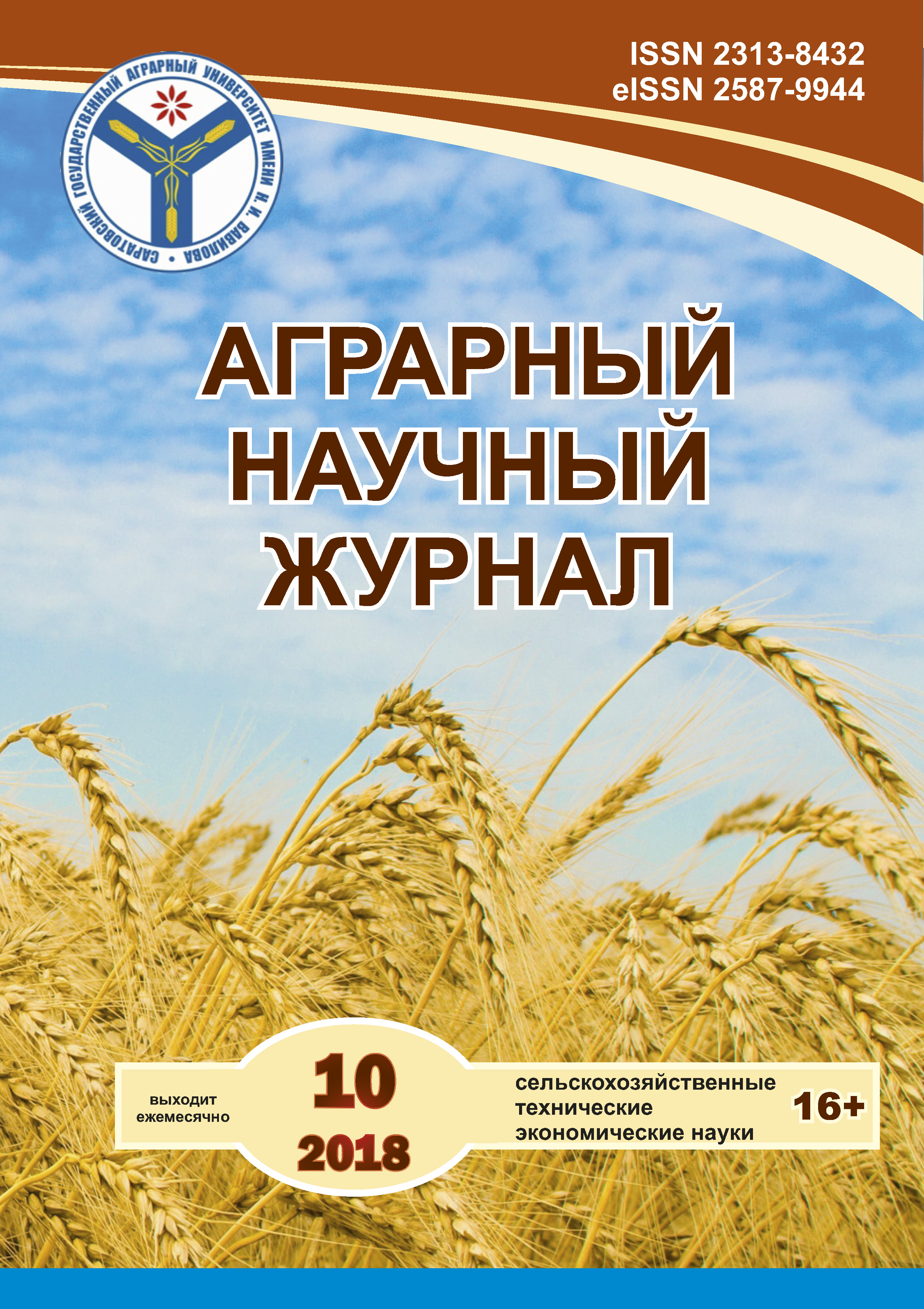CRITERIA SELECTION COMBINATIONS OF CROSSING FOR CREATION TANGERINE HYBRID FUND
DOI:
https://doi.org/10.28983/asj.v0i10.431Keywords:
Citrus plants, tangerine, hybridization, productivity of crossing, hybrid fundAbstract
The combination of various directions in selection provides creation of varieties with a complex of properties and the signs possessing high productivity adapted to certain soil, climatic and economic conditions. In selection practice with citrus fruit crops for reception of hybrid seeds following main principles are considered: characterical, geographical. Characterical a principle in selection work with tangerine (Citrus reticulata Blan. var. unchiu Tan.) Allows to be based on use of sources selection-significant signs - productivity, low-growing, biotical and abiotical stability, the complex maintenance components of biochemical structure, the estimation of initial forms is spent on phenotype. Geographical principle in tangerine selection has wide application it is based on application of interpatrimonial and interspecific hybridization. Use of wild, half-civilized and cultural relatives of citrus allows to receive hybrids with the big spectrum of variability to the important signs (early naturity, fast maturing of fruits, large fruits). 47 combinations of crossing were analyzed and allocated 21 - perspective for creation of hybrid fund of a tangerine where parent forms “Kowano-Wase”, “Miyagawa Wase”, “Yubileinii” - transfer to the posterity such signs as - low-growing, early naturity, productivity, quality of fruits. Relatives and hybrid kinds of citrus C. ? tangelo, С ? clementina, C. ? leiocarpa, C. ? insitorum, P. trifoliata, hybrid 3252 transfer winter hardiness, large fruits. The most productive combinations on an exit winter-hardy seedlings are crossings “Miyagawa Wase” ? P. trifoliata, “Kowano-Wase”? P. trifoliata and “Kowano-Wase”? C.? insitorum. The greatest exit of undersized seedlings is noted in combinations with participation in quality pollinator C. leiocarpa. In combinations “Yubileinii” ? C.? insitorum, “Yubileinii” ? hybrid 3252, “Miyagawa Wase” ? C.?insitorum the greatest quantity early naturity forms is allocated. Large fruits are transfer to posterity fatherly forms C. ? insitorum, С sinensis “Valencia”’.
Downloads
References
2. Кулян Р.В. Создание сортов цитрусовых на юге России // Субтропическое и декоративное садоводство: сб. науч. тр. – Сочи: ВНИИЦиСК, 2007. – Т. 40. – С. 221–231.
3. Программа и методика сортоизучения плодовых, ягодных и орехоплодных культур / под ред. Е.Н. Седова, Т.П. Огольцовой. – Орел: ВНИИСПК, 1999. – 608 с.
4. Программа Северо-Кавказского центра по селекции плодовых, ягодных, цветочно-декоративных культур и винограда на период до 2030 г. –Краснодар: ГНУ СКЗНИИСиВ, 2013. – 202 с.
5. Рындин А.В., Кулян Р.В. Возможности повышения зимостойкости цитрусовых во влажных субтропиках России // Плодоводство и ягодоводство России. – 2013. – Т. XXXVII. – № 2. – С. 204–207.
6. Ускорение и повышение эффективности селекции плодовых культур / Г.В. Еремин [и др.]. – Краснодар, 2010. – 55 с.
7. Li Y.Z., Cheng Y.J., Yi H.L., Deng X.X. Genetic diversity in mandarin landraces and wild mandarins from China based on nuclear and chloroplast simple sequence repeat markers // 2006 J. Hort. Sci. Biotechnol., 81: 371–378.
8. Siragusa М., Pasquale F., Abbate L., Tusa N. Identification of sour orange accessions and evaluation of their genetic variability by molecular marker analysis // 2006. Hortic. Sci., 41: 84–89.








